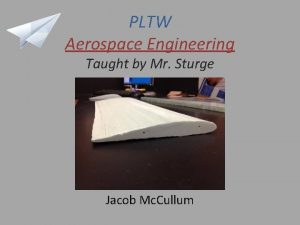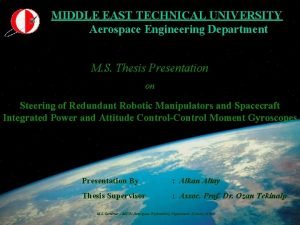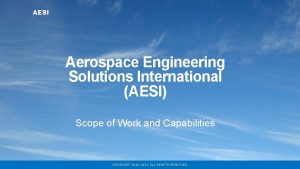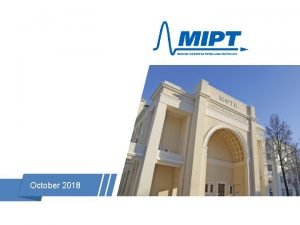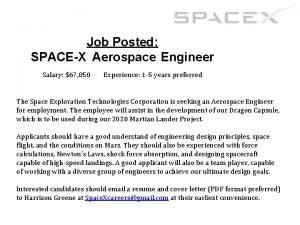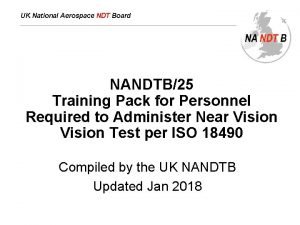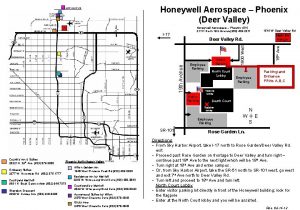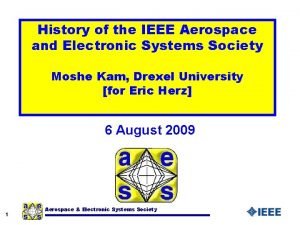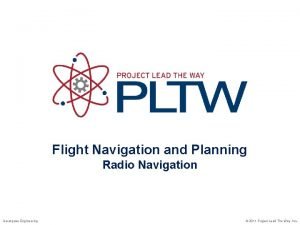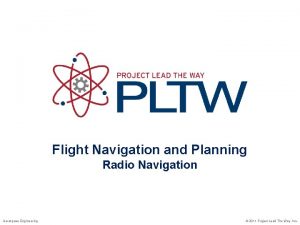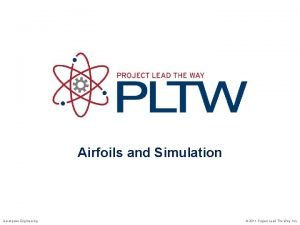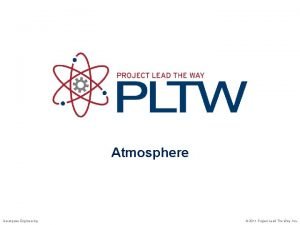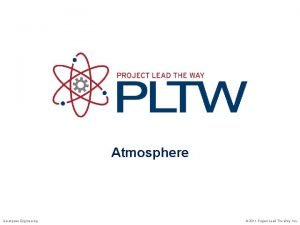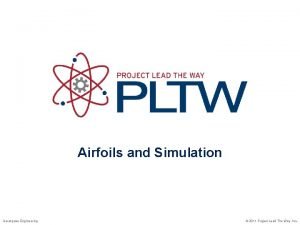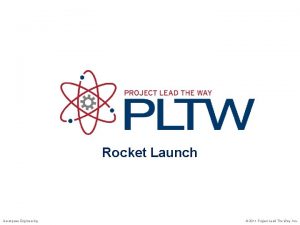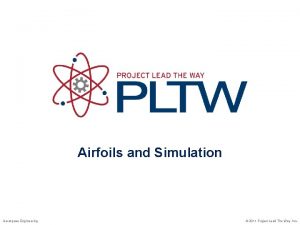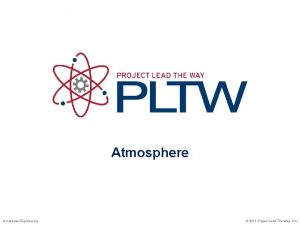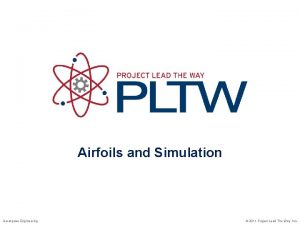History of Navigation Aerospace Engineering 2011 Project Lead















- Slides: 15

History of Navigation Aerospace Engineering © 2011 Project Lead The Way, Inc.

Navigation History Observation – Observe fixed objects around us • One drives toward a mountain or building close to a destination • Setting sun indicates westerly direction – What direction does the sun set in Australia?

Navigation History Maps – Objects are plotted on paper to represent the earth’s surface as seen from above – Imaginary lines, latitude and longitude, make a grid to describe where something is located – Latitude lines run east-west and measure north-south – Longitude lines run north-south and measure east-west Lines of Latitude Lines of Longitude

Navigation History Compass – Magnetized piece of iron aligns to earth’s magnetic field – Magnet points to magnetic north – Magnetic north is not the same as true north Aligns with Magnetic Iron Bar Earth’s Magnetic Field

Navigation History Ocean Passage – Dead reckoning using time and velocity – Sextant measures angular altitude of star above horizon – Walker log dragged behind boat to indicate speed in knots (nautical miles per hour)

Navigation History Early pilots navigated by sight – Routes set up as a chain of visual towers – Requires line of sight from aircraft to tower – Clouds, haze, dust, etc. obscure vision Chain of Towers

Navigation History Radio Navigation – LORAN-C • LOng RAnge Navigation – NDB • Non-Directional Beacon – ILS • Instrument Landing System – VOR • Very High Frequency Omni-Directional Range – GPS • Global Positioning System

LORAN – Long Range Navigation • • LOng RAnge Navigation LORAN-C is no longer used Was designed for maritime navigation Was a supplement to aerial navigation

NDB – Non Directional Beacon • Measures clockwise angle between airplane longitudinal direction (airplane pointing) and NDB • Oldest electronic navigation still used • Can be used at lower altitude than VOR • Aircraft instrument: Automatic Direction Finder (ADF)

VOR - Very High Frequency Omni. Directional Range • Shows aircraft’s position relative to VOR radial • Very commonly used in aircraft

ILS – Instrument Landing System Navigation aid to guide aircraft to runway

GPS – Global Positioning System • U. S. space-based radio-navigation system • Provides three-dimensional location (latitude, longitude, and altitude) plus time • Components – Satellites orbiting Earth – Control and monitoring stations on Earth – GPS receivers owned by users

References Bartlett, T. (2009). The book of navigation. New York, NY: Skyhorse Publishing. Federal Aviation Administration (2009). Retrieved August 25, 2009, from http: //www. faa. gov/ i. Stockphoto. Retrieved from http: //www. istockphoto. com/stock-photo 5975040 -woman-using-a-gps. php Munns, H. (1991). Unlocking the chart’s secrets. In Cruising fundamentals (p 81). Marina Del Ray, CA: American Sailing Association and International Marine.

References National Aeronautics and Space Administration (2009). Retrieved from http: //www. nasa. gov/ National Executive Committee for Space-Based Positioning, Navigation, and Timing (2009). Retrieved from http: //pnt. gov/ National Space-Based Positioning, Navigation, and Timing Coordination Office (2009). Global Positioning System Retrieved from http: //www. gps. gov/

References Jeppesen (2007). Navigation (2007). In Jeppesen Private pilot: Guided flight discovery (pp. 9 -20 – 9 -46). Englewood, CO: Jeppesen United States Coast Guard (2009). LORAN-C general information. Retrieved from http: //www. navcen. uscg. gov/loran/
 Pltw aerospace engineering
Pltw aerospace engineering Metu aerospace engineering
Metu aerospace engineering Aerospace engineering solutions
Aerospace engineering solutions Phystech international
Phystech international Honeywell aerospace engineer salary
Honeywell aerospace engineer salary Lead magnesium niobate
Lead magnesium niobate Jira change project lead
Jira change project lead Rit mechanical engineering
Rit mechanical engineering Pltw design brief
Pltw design brief National aerospace solutions
National aerospace solutions Aerospace design process
Aerospace design process International aerospace quality group
International aerospace quality group Deer valley honeywell
Deer valley honeywell Aerospace and electronic systems society
Aerospace and electronic systems society How to invest in garuda aerospace
How to invest in garuda aerospace Configuration management aerospace
Configuration management aerospace
